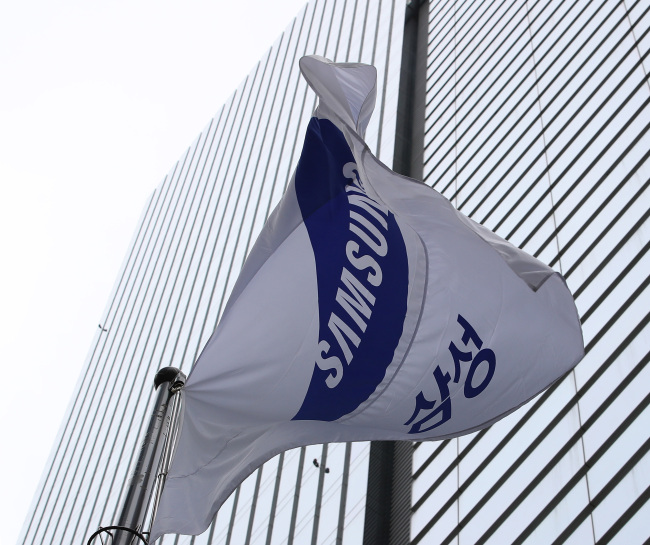After achieving a record-high first-quarter operating profit, South Korean tech giant Samsung Electronics faces a tough second quarter, as its display and mobile businesses are forecast to experience unfavorable market conditions, according to a conference call held Thursday after its earnings announcement.
While the memory business is expected to stay robust in the following quarter, Samsung’s mobile device business is projected to see declines in sales of premium flagship models due to slowing demand in the global handset market.
“In the second quarter, total smartphone sales are estimated to decline from the first quarter, due to discontinuation of some mid-tier models and stalled growth in demand for high-end smartphones,” an official at Samsung’s IT and mobile communications division said.

(Yonhap)
“The mobile business is also expecting the marketing cost of smartphones to increase in the following quarter to continue boosting sales of the Galaxy S9 and S9+ models, which would undermine the profitability of the business,” the official said.
In the first quarter alone, Samsung sold a total of 86 million units of mobile phones. About 90 percent of the phones were smartphones, the company said.
According to the earnings announcement, Samsung posted 60.56 trillion won ($56.98 billion) in consolidated revenue and 15.64 trillion won in operating profit for the first three months of the year.
Its first-quarter revenue grew nearly 20 percent year-on-year, while its operating profit shot up 58.03 percent, marking a record high for the quarter. The operating margin in the first quarter was 25.8 percent, up 6.2 percentage points from a year earlier.
Such growth in revenue was primarily led by the memory chip business and increased sales of flagship mobile products, including the Galaxy S9, earlier than before, Samsung said.
The display panel business that belongs to Samsung’s device solutions division is forecast to see weak demand for organic light-emitting diode panels and excessive competition in the liquid-crystal display market for the next three months.
“While we are expecting some strong demand for flexible OLED panels, the LCD market is forecast to have uncertainties due to growing competition and capacity expansion,” an official at Samsung Display said. “Our focus will be differentiating with value-added products, including large-size and high resolution TV panels.”
Despite favorable forecasts for the memory business for the next three months, some industry watchers raised longer-term concerns about expected oversupply due to a recent ramp-up in DRAM production by Samsung.
“There are concerns about some oversupply of memory chips possibly in the second half of the year due to latest moves by Samsung to ramp up DRAM production,” said Lee Se-cheol, an analyst at Citi Financial Group.
A Samsung official at the memory business, however, dismissed the concerns, saying, “Server-side demand will remain strong, while big growth would be limited due to increasing difficulties in technological migration.”
Samsung is also planning to start mass production of the X generation of DRAM products during the second quarter of this year, while aiming to mass produce the fifth generation of V-NAND flash chips within the year.
The company’s semiconductor business, including memory, system LSI and foundry, posted a total of 11.55 trillion won in operating profit on consolidated revenue of 20.78 trillion won in the first quarter.
Samsung’s mobile business saw 28.45 trillion won in consolidated revenue and 3.77 trillion won in operating profit for the quarter.
The consumer electronics division obtained 280 billion won in operating profit, down from 510 billion won in the fourth quarter of last year due to weak seasonality for home appliances during the January to March period.
However, the unit is expecting to see some improvements in TV earnings with the launch of 2018 QLED TV models, as major sports events such as the World Cup are scheduled for the second quarter.
By Song Su-hyun (song@heraldcorp.com)






